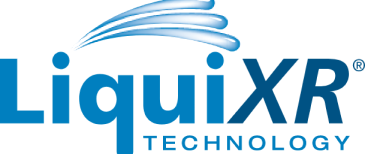People with ADHD
deserve medications that offer flexibility and longer lasting benefit
Many available attention-deficit/hyperactivity disorder (ADHD) therapies are associated with significant drawbacks that create additional burden for patients. Our portfolio of leading ADHD medicines harnesses the innovative capabilities of our proprietary LiquiXR® technology to reduce these drawbacks and improve treatment outcomes for adults and children with ADHD.

Understanding ADHD is critical to improving outcomes
Living with ADHD can be a debilitating struggle that can cause mood swings and impulsiveness, and make it difficult to pay attention. Untreated ADHD symptoms can have a significant negative impact across an individual’s daily life, including school and work performance, as well as the quality of social interactions and relationships.1 Medication can help patients function better throughout the day; however, many approved treatments don’t meet all the needs of ADHD patients for flexibility, consistency and duration of effect.
Our flexible technology, which is designed around the needs of patients, differentiates our portfolio of five leading ADHD therapies that encompass a range of multiple delivery options uniquely tailored to patients’ needs.
How Well Do You Know ADHD?
-
- ADHD is pervasive in children and adults. In the United States, approximately six million children (nearly one in 10) and eight million adults have ADHD. 2,3
- Children commonly receive treatment. According to the Centers for Disease Control and Prevention (CDC), approximately three in four children with ADHD receive treatment, including medication and/or behavioral therapy.2
- Many adults are left behind. Studies suggest that over 80% of adult ADHD cases are currently untreated and/or undiagnosed by a psychiatrist.3
- Females are diagnosed later in life. Studies point to gender differences in ADHD, with females showing more inattention (versus hyperactive and impulsive) symptoms and typically receiving an ADHD diagnosis later than males.4
-
- ADHD negatively impacts driving capabilities. Drivers with ADHD are more likely to have a license revoked or suspended and have a higher incidence of crashes and traffic citations. 5
- ADHD is not a consistent condition. The severity of symptoms can vary from patient to patient, as well as fluctuate on a daily basis.
- Undiagnosed and untreated ADHD is associated with poor outcomes. These may include adverse driving events, poor performance at school and work, and comorbid conditions, including substance use disorder, personality disorder, mood instability and obesity.1,6
- The precise cause of ADHD is not fully known. Differences in brain structure and chemistry are at the core of ADHD, but environmental and genetic factors may also play a role.7
Our LiquiXR® technology allows for medicines that:8-9
- have extended-release of medication
- can be tailored with a smooth, consistent release profile
- are available as liquid or tablet
- have flexible dosing options
The LiquiXR® difference: continuous delivery to address patient variability
Our proprietary LiquiXR® technology allows us to create ADHD medications in a variety of formulations that are flexible and allow precise, consistent drug release to patients despite their individual needs and differences. This patented technology is built around a unique diffusion coating. When the coating is applied in many different thicknesses to carrier particles with the drug attached, the therapy can be tailored to provide a consistent and continuous release of medication over a targeted duration.

For more information on our ADHD medicines, visit www.TrisADHD.com
1 Shaw, M., Hodgkins, P., Caci, H., et al. (2012). A systematic review and analysis of long-term outcomes in attention deficit hyperactivity disorder: effects of treatment and non-treatment. BMC Medicine, 10, 99.
2 Bitsko R., Claussen A., Lichstein J., et al. (2022). Mental Health Surveillance Among Children — United States, 2013–2019. MMWR. Suppl 2022;71(Suppl-2):1–42.
3 Ginsberg, Y., Quintero, J., Anand, E., et al. (2014). Underdiagnosis of attention-deficit/hyperactivity disorder in adult patients: a review of the literature. The primary care companion for CNS disorders, 16(3), PCC.13r01600.
4 Gershon, J., & Gershon, J. (2002). A Meta-Analytic Review of Gender Differences in ADHD. Journal of Attention Disorders, 5(3), 143-154. https://doi.org/10.1177/108705470200500302
5 Barkley, R. A., Murphy, K. R., Dupaul, G. I., & Bush, T. (2002). Driving in young adults with attention deficit hyperactivity disorder: knowledge, performance, adverse outcomes, and the role of executive functioning. Journal of the International Neuropsychological Society (JINS), 8(5), 655–672.
6 Matza, L. S., Paramore, C., & Prasad, M. (2005). A review of the economic burden of ADHD. Cost Effectiveness and Resource Allocation: C/E, 3,5.
7 Faraone, S.V., Larsson, H. Genetics of attention deficit hyperactivity disorder. Mol Psychiatry 24, 562–575 (2019). https://doi.org/10.1038/s41380-018-0070-0
8 Pardo A, Kando JC, King TR, Rafla E, Herman BK. Single-dose pharmacokinetics of amphetamine extended-release tablets compared with amphetamine extended-release oral suspension. CNS Spectr. 2020;25(6):774-781.
9 Kando JC, King TR, Pardo A. A novel, modified release drug delivery technology containing amphetamine and methylphenidate ion-exchange complexes. Poster presented at American Psychiatric Association Annual Meeting; May 1-3, 2021.
